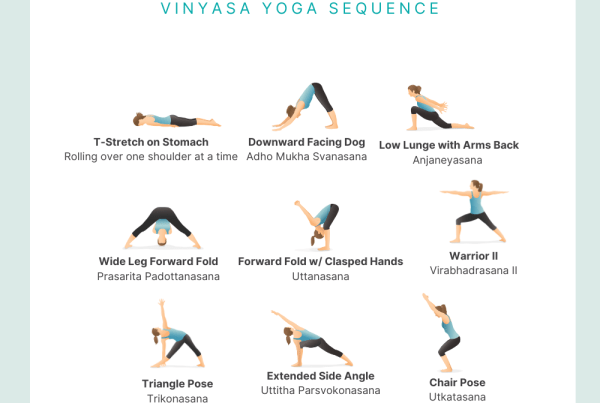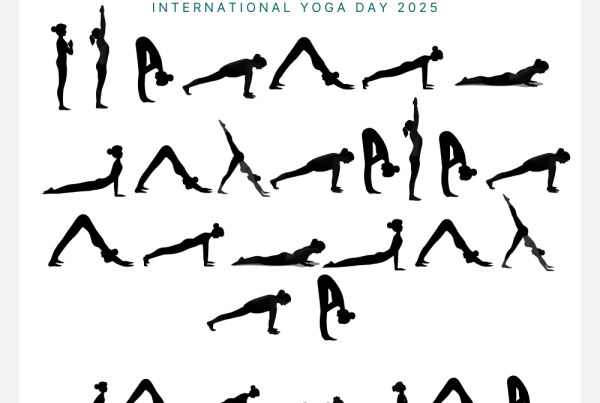
Yoga has many aspects, interpretations, and meanings. This can vary based on lineage, origin location, and style. However, all types of yoga share the common basic understanding that it is a practice which brings together the layers of oneself (physical, mental, emotional, spiritual) in order to achieve self-realization.
Masculine and Feminine Nature within the Yoga Practice
While yoga began as a male-dominated practice, it is one which actually intends to combine both masculine and feminine qualities. Generally speaking, part of the yoga practice is showing up consistently and diligently through will-power and discipline which are of masculine characterization. Another part of yoga is the journey of developing intuition, gaining self-awareness, and looking inward which are of feminine characterization.
While the yoga practice has emphasized masculine and feminine, solar power and lunar power, yang and yin…societies all over the world have largely focused on the development of masculine traits. “More pain, more gain.” “Hard work always pays off.” “Consistent hard work leads to success.”
Embracing Your Feminine Nature
As explained in the book “In the FLO” by Alisa Vitti It has been commonly ingrained in us that the more we work and the harder we work day in and day out the more benefits that we will reap. We’ve been programmed towards the circadian 24-hour clock with the wake, work, eat, sleep, repeat routine. But did you know that this 24-hour clock is based on a man’s physiology? Yup, this is actually how men work best due to their hormonal clock, which throughout the month typically does not have much variation.
Women are much different. Women do have a 24 hour clock, but we also have a second clock lasting on average 28 days (the range is typically 23-35 days) and this is called an infradian clock. It has four different phases all of which have different physiological processes that affect not only the reproductive and menstrual processes, but also processes which affect the nervous system, immune system, metabolic system, gastroenterological system, and the endocrine system. It’s tuning into the infradian clock where the magic of living in-sync with our cycle begins to take place.
The Four Phases of the Menstrual Cycle
- Follicular Phase – hormones rise throughout this phase following the monthly bleed in order to mature the eggs in the ovaries in preparation for a potential pregnancy. This phase is associated with spring and new beginnings.
- Ovulatory Phase – the hormones estrogen, luteinizing hormone (LH), and testosterone all rise to release a mature egg into the fallopian tube and then the prepped endometrium. This phase is associated with summer and growth.
- Luteal Phase – the hormone progesterone rises to signal the body to maintain the thickening of the uterine lining (initiated by estrogen) to be ready for a fertilized embryo. If fertilization does not take place, the follicle from which the matured egg was released is reabsorbed back into the body and hormones estrogen, progesterone, and testosterone all fall to their lowest levels after peaking in the first half of the cycle. This is generally where PMS symptoms are experienced, which are the result of imbalanced hormones. This phase is associated with fall and harvesting.
- Menstrual Phase – as the corpus luteum (the follicle from which the matured egg came from) is reabsorbed back into the body, progesterone levels drop which signals the shedding of the uterine lining which is the monthly bleed, or one’s period. This phase is associated with winter and rest and reflection.
Symptoms From Being Out-Of-Sync with Mother Nature
As you may already be able to infer, this beautiful monthly cycle has a large effect on the way a woman shows up in her everyday life. To expect anyone, but especially a woman, to show up the same day in and day out is not only out of line but can actually do damage to a woman’s entire system.
To live out of sync with the monthly cycle does no good for a woman and the people around her as it can lead to:
- Brain fog
- Mood swings
- Irritability
- Depression
- Trouble concentrating
- Fatigue
- Cramps
- Bloating
- Irregular periods
- Anxiety
- Dampened immune system functioning
- Infertility
- Low libido
- Weight gain
- Inability to reach fitness goals
…basically all recognized PMS symptoms and more.
The Magic of Living In-Sync with Mother Nature
However, to live in sync with the monthly cycle allows a woman to live an empowered life by embracing this natural gift and fully accepting womanhood and all the powers it has to offer.
This includes but is not limited to:
- Increased energy capacity
- Increased synchronous experiences
- Confidence and empowerment within your body and life
- Feeling safe and grounded in your own body
- Time management skills
- Decreased stress levels
- Increased productivity
- Increased creativity
- Effortless weight management
- Fulfillment and purposeful living
- Alignment within yourself and your choices
…basically all things that we think we get from working non-stop but can actually achieve by doing less.
When it comes to your yoga practice, according to your cycle, this would mean practicing different types of yoga during different parts of the month. For some, this may be exciting, “Cool, I get to try new classes and I have guidelines for when to do it?!” For some this may feel scary, “Does this mean I can’t go to my favorite power yoga class every week?!” This does mean you’ll have the guidelines to try out new classes, but it does not mean you cannot attend your favorite power yoga classes each week (although there may be some weeks you opt out of the extra chaturangas). The hope is that this information will empower you to make decisions that are truly honoring your body, which can do wonders for yourself that you may not even be aware of.
The Four Phases and Yoga Practice Recommendations
Below is an explanation of the four phases in conjunction with how you might tend to your practice. Keep in mind, these are just guidelines which are meant to help you tune in to nature’s gift of your goddess cycle. You are ultimately the one in charge to make the decisions that are best for you, but it is recommended that if you participate in a practice that opposes where you are naturally, to pay close attention to how you feel during and after.
Follicular Phase
13-14 Days
Spring
When your hormones are on the rise, so is your energy. This is a great time to nourish your body with some higher intensity workouts and classes. Go to your power yoga classes, fusion yoga/strength classes, and/or higher intensity hot yoga classes. This is a great time to try new things, so if there’s a studio, class, or teacher you’ve had your eye on but haven’t gotten around to attending yet…this is the time within your cycle to go for it!
Recommended Practices: vinyasa yoga, ashtanga yoga, power yoga, hot yoga, fusion classes.
Ovulatory Phase
3-4 Days
Summer
Hormones are not only on the rise but at their peak during this phase. You’ll have a lot of energy so this is an ideal time to continue with your higher intensity classes. Testosterone is also at its peak during this time, so take advantage of your muscle building capabilities and plan to hit some strength training classes or workouts in tandem with your other yoga classes. Your beautiful energy will contribute to you feeling like a social butterfly, so this is an ideal time to participate in classes or workshops which offer for you to be more social.
Recommended Practices: vinyasa yoga, ashtanga yoga, power yoga, hot yoga, fusion classes, strength training.
Luteal Phase
12-14 Days
Fall
During the first half of this phase, your hormones and therefore your energy, will still be relatively high. Always check in with how you are feeling as throughout this phase is a good time to begin lowering your intensity levels. Again, this might mean that you’re still attending your weekly power yoga classes but you might make different choices with how you show up in those classes (it’s okay to do less). Slower paced classes focused on alignment and holding postures for a longer amount of time might be ideal, as well as slower strength training sessions. It’s still a good time to take advantage of muscle building capabilities! In the second half of the luteal phase, your energy will begin to diminish as all three reproductive hormones begin to lower. Keep checking in with how you’re feeling and don’t feel the need to push it as this is a good time to really slow down and lower your intensity levels. Your body is already going through a lot, so if you do too much your body’s systems may go into overdrive and fatigue. Consider Iyengar yoga, hatha yoga, restorative yoga, and yin yoga during this time of the month. You might also consider taking days off of physically active yoga and focus exclusively on pranayama and meditation.
Recommended Practices: Iyengar yoga, hatha yoga, restorative yoga, yin yoga, meditation, pranayama.
Menstrual Phase
2-7 Days
Winter
Your hormone levels and therefore your energy is at their lowest points as you progress through your monthly bleed. This is the time of the month to turn towards restorative and restful practices as anything too high intensity will be too much effort on the bodily systems. There is no need to push it or do too much during this phase and it’s best to be highly intuitive about your body and your physical activity. As in the second half of your luteal phase, you might even consider skipping days in lieu of taking it easy to go for a walk, or focusing exclusively on meditation or pranayama.*
Recommended Practices: restorative yoga, yin yoga, walking meditation, sitting/lying down meditation, pranayama.
*It might happen where something higher intensity falls on a day when you are in the second half of your cycle. Think about a yoga teacher training day where everyone is practice teaching that day or an arm balancing workshop that you’ve been dying to take — If this is the case, that is A-OK. You don’t need to cancel any plans if you don’t want to, but you might do some extra planning before and after the event to ensure you are giving yourself some extra TLC.
8 Yoga Poses to Help Ease Period Pain
You Are in the Driver’s Seat!
As mentioned previously, you are the one in the driver’s seat so you make the decisions which are best for you. But if you’ve never considered your monthly cycle and you’ve found yourself questioning why sometimes you feel like superwoman and sometimes you feel quite the opposite for no apparent reason, it could be time to look within. Women are armed with an amazing and magnificent process which is literally geared towards creating life. And there’s nothing we have to do to kickstart this process. It happens naturally, just as the seasons come and go, the earth spins, and leaves fall. All we have to do is observe and build our levels of self-awareness so that we can live in tune with mother nature and reap all the outstanding benefits.
Keep learning about YOU.
Don’t stop here! If you found this information engaging and informative the book “In the Flo” by Alisa Vitti is absolutely recommended. You can continue to gain more knowledge about how to tailor your lifestyle, diet, and exercise to heal your hormones and experience work, motherhood, relationships, and all aspects of life in an aligned, intuitive, and natural fashion.
Hormone Reference Guide
Cortisol – the body’s main stress hormone, cortisol is released from the adrenal glands and is controlled by the HPA (Hypothalamic-Pituitary-Adrenal) Axis, which is essentially a series of steps your body takes in response to stress. A little stress is normal, but unregulated chronic stress can lead to a myriad of issues on all systems of the body.
Estrogen – mostly produced by the ovaries and is the main hormone involved in thickening the uterine lining to prepare for a potential pregnancy. Estrogen also plays a major role in many protective processes involving brain health, immunity, gut health, and nervous system regulation.
Insulin – secreted by the pancreas; insulin breaks down glucose from carbohydrates in the bloodstream so the glucose can be used for energy; insulin is vital to regulate blood-sugar levels in the body.
Luteinizing Hormone (LH) – released by the pituitary gland in the brain as a signal to release a mature egg from a follicle into a fallopian tube.
Progesterone – progesterone levels rise during ovulation and are responsible for controlling and maintaining the thickening of the uterine lining. It is also involved in promoting relaxation, quality sleep, and enhanced moods.
Testosterone – Produced in the ovaries and adrenal glands, testosterone surges slightly during and immediately after ovulation. It increases sex drive during the time you are most likely to get pregnant.
Resources:
Vitti, A. (2020) In The FLO: Unlock Your Hormonal Advantage and Revolutionize Your Life. New York, NY. HarperCollins Publishers.










